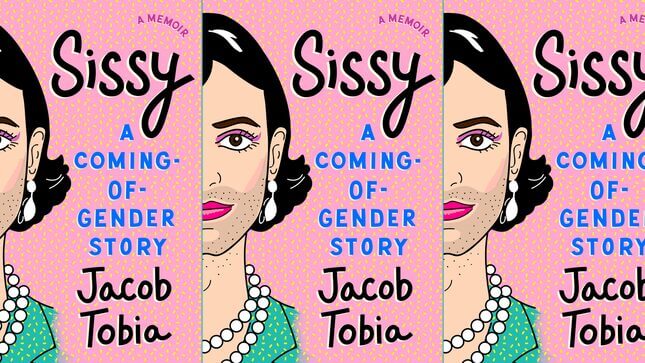

Jacob Tobia’s new memoir is both timely and “oh so needed”—at least, that’s what the author tells us in the opening pages of Sissy: A Coming-of-Gender Story. “This book is a rebellion against a mainstream, classical trans narrative that’s, quite frankly, gotten a little repetitive,” they write, describing that “classical trans narrative” as humorless, reductively binary, predicated on trauma, and written with a cis reader in mind. “Through diagnosing the classical trans narrative—and detailing how my own story and worldview differ from it—we can come to a deeper understanding of why this book is a timely and oh so needed challenge to people who believe that there’s only one trans story to tell,” Tobia argues (italics theirs).
Tobia’s critique of the trans memoir isn’t particularly novel; nearly every author of a trans memoir has leveled a similar critique at the genre, whether or not they state it outright (You wouldn’t write a memoir if you didn’t think you had something new to say, right?). The irony of Tobia’s stated mission—that calling for the new is nothing new—highlights one of the major problems with Sissy, a book that promises a literary “rebellion” without ever trying to pick up the first brick. Nobody was killed at Stonewall, but Sissy did produce one casualty: the time I spent reading it that I’ll never get back. May she rest in peace.
Part of the book’s failure to live up to its author’s revolutionary claims could be attributed to the fact that Tobia doesn’t really seem to know what they are rebelling against. In unpacking “the classical trans narrative,” they cite stories in “national news outlets, documentary films, fundraising materials, and Facebook posts,” but neglect the most obvious forebear: the trans memoir.
At its most expansive, the genre encompasses more forms than I could ever list here: from oral traditions to Twitter threads, zines, and long-lost letters. The best-known examples of the trans memoir, however, come to us by way of mainstream literary publishing, where the genre has long served as one of the few avenues available to trans writers. Some of the best-known examples of the trans memoir could perhaps be reclassified as celebrity memoirs, serving as a means of commodifying their authors’ fame and notoriety so that they and their publishers may profit off of pre-existing public interest.
Unlike Janet Mock or Jan Morris, both of whom worked as journalists prior to writing their respective memoirs, writers like Christine Jorgensen or Caitlyn Jenner landed their book deals because they were all over the tabloids and the curious cis public wanted more. They weren’t writers; they were just famous. This could explain why the structure of the trans memoir is typically so formulaic. The average trans memoir follows its author’s life chronologically, from their “gender dysphoric childhood,” as Jonathan Ames writes in the introduction of Sexual Metamorphosis: An Anthology of Transsexual Memoirs, to “the move to the big city and the transformation” that follows. “The third act to these stories… is the aftermath of the sex change,” Ames notes. He compares this three-act structure to that of the bildungsroman, a literary genre that’s centuries old.
The result of this focus on celebrities’ stories is a body of trans literature that’s as formally conservative as it is homogenous in perspective. “[It’s] just regurgitations of the same old story that makes us boring and dead and safe to read about,” writes Kai Cheng Thom in Fierce Femmes and Notorious Liars: A Dangerous Trans Girl’s Confabulous Memoir’s equally confabulous foreword. “[I]f you’re good and brave and patient (and white and rich) enough, then you get the big reward… which is that you get to be just like everybody else who is white and rich and boring.”
-

-

-

-

-

-

-

-

-

-

-

-

-

-

-

-

-

-

-

-

-

-

-

-

-

-

-

-

-

-

-

-

-

-

-

-

-

-

-

-








































